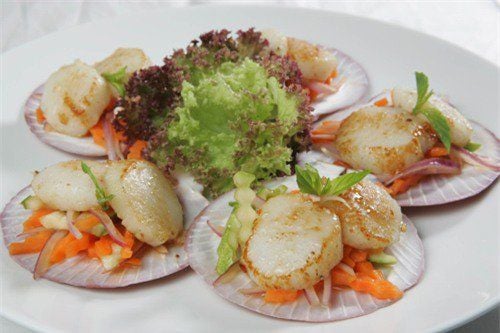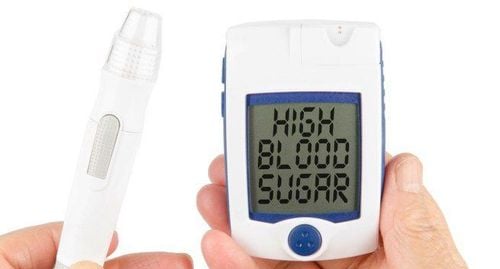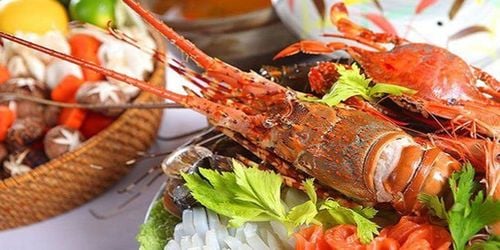This is an automatically translated article.
Many diabetics are concerned that the consumption of seafood in general and snails in particular may affect their blood sugar levels. However, in fact snails are considered a food with high nutritional value and are suitable for people with diabetes. In addition, to control their disease well, people with diabetes need to combine a healthy diet with regular exercise.1. Can diabetics eat snails?
Snails are a type of molluscs, invertebrates and covered in a lime shell. For a long time, snails have become a popular dish in many parts of the world. Many people love to eat snails because snails not only have a unique flavor but are also rich in nutritional value. However, for people with diabetes, what to eat and how to eat so as not to affect blood sugar levels is actually quite a difficult thing. Many people wonder, can diabetics eat snails? Currently, many studies have found that the venom in sea snails has the ability to support the treatment of diabetes. Specifically, snail venom contains a naturally occurring protein, called Con-Ins G1, that works faster than human insulin by avoiding the structural changes that human insulin undergoes.Snail venom can activate the signaling pathway of human insulin cells and help successfully bind to human receptors. Normally, sea snails will use venom as a "weapon" to help them hunt by shocking the opponent's blood sugar.
People with type 1 diabetes cannot produce insulin and need daily injections to control their blood sugar. Therefore, with snail venom's ability to act faster than human insulin, the researchers suggest that it is possible for diabetics to consume snails to improve insulin production as well as limit the risk of increased blood pressure. blood sugar.
2. Sea food groups good for diabetes
If you don't have an allergy, seafood can become a valuable part of a healthy diet for people with type 1 and type 2 diabetes.Seafood, or aquatic animals Edibles generally include both freshwater and marine organisms. Seafood includes cartilaginous fish, bony fish, mollusks, crustaceans, jellyfish, turtles, frogs, sea urchins, and sea cucumbers. Here are the different types of seafood and their potential health benefits for people with diabetes:
2.1. Fish, molluscs, and crustaceans Crustaceans include crabs, lobsters, and common shrimp. Meanwhile, molluscs are usually invertebrates and surrounded by a lime shell, such as snails, mussels and squid.
Nutritionists recommend that adults eat two 3.5 to 4 ounce servings of fish and seafood per week. You should choose seafood that is high in omega-3 fatty acids, docosahexaenoic acid (DHA) but low in mercury. In addition, women should consume about 500 mg of omega-3 acids from seafood per day and 600 mg for men.

Ốc là loại thực phẩm giàu dinh dưỡng và phù hợp cho bệnh nhân tiểu đường
The prevention and protection of the heart is also extremely important for diabetics. According to research, in people with type 2 diabetes, about 65% of people die from cardiovascular disease. So all people with diabetes need to take precautions to reduce their odds of heart disease. This includes getting extra omega-3 fatty acids from seafood like fish, crustaceans and molluscs.
2.2. Jellyfish Jellyfish are animals with a soft gelatinous structure and a single cavity for all bodily functions. In many parts of the world, jellyfish are considered a delicacy. One cup of dried jellyfish provides about 1 gram of fat, 3 grams of protein and 5,620 mg of sodium.
Currently, jellyfish are being studied for their potential to aid in the treatment of diabetes. In fact, some jellyfish produce a green fluorescent protein (GFP). This protein attaches to insulin-producing cells in the pancreas, helping diabetes researchers understand how insulin is made in the body. This also sets the stage for the development of new treatments for diabetes.
2.3. Frogs Frogs are mainly aquatic amphibians, with a slender body with moist skin and long strong hind legs and webbed feet.
A study published in 2013 showed that secretions from the skin of some frog species can release insulin and is considered useful for the treatment of type 2 diabetes.
2.4. Seaweed Recent studies have shown that when people with diabetes consume seaweed regularly, it will significantly reduce fasting blood sugar and blood sugar levels 2 hours after meals.

Có nghiên cứu cho thấy, ăn nhiều rong biển có thể làm giảm lượng đường huyết
To know how to effectively treat diabetes, as well as have a diet and activity for each person with different types of diabetes, customers can book an appointment through the website of Vinmec International General Hospital to receiving effective support from a team of doctors..
Endocrinology - Vinmec International General Hospital has achieved many achievements in examining and treating patients with diabetes. When the hospital converges a team of doctors with many years of experience, combined with a system of modern machinery and equipment. Therefore, after a period of treatment, patients always have a positive improvement in health as well as minimize complications caused by diabetes.
Please dial HOTLINE for more information or register for an appointment HERE. Download MyVinmec app to make appointments faster and to manage your bookings easily.
Reference source: diabetescare.net - sciencedaily.com - diabetes.co.uk












